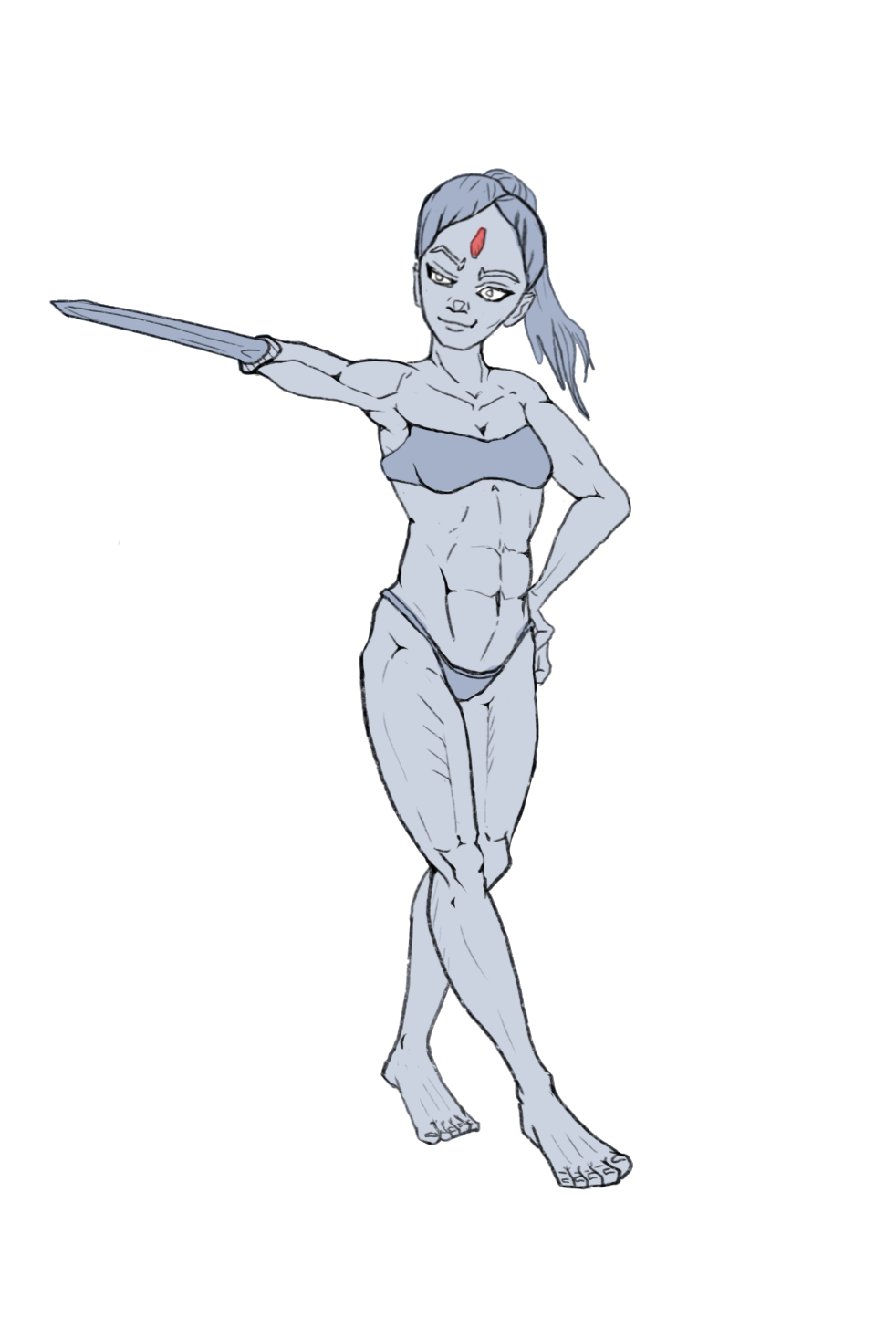Thanks.
I kind of got stuck and tunneled on trying to eradicate my need to add anatomy from my gesture drawings these past few weeks.
I've noticing more and more how I have a very hard time converting/keeping the gesture when trying to refine and polish it into a drawing.
I was going to call it for today, but after you mentioned this I might just have to try doing some more gestures to see if i can figure it out 
I would love if I could add more depth/form to my gestures without them losing their flow, and cylinders definitely seem like a dynamic enough shape that they could do the trick.
On a side note I really love how other people can (and are willing) to help and spot mistakes like this since learning alone has a a habit of making you blind to your own mistakes.
When I learned to program a decade ago the developer community was very far from this kind, so thanks again 
I hope to one day be at a level where I can help others out with art!
On the studying side I spent another day of drawing hands on repeat.
I'm finally at a stage where I don't feel scared of drawing hands, which is a huuuuge relief.
Finally feeling ready to move on to the next subject for now (I'm 100% coming back to hands. There is so many more facets to learn)
I've drawn like 250+ hands these past few days and boy have I picked up a lot of good info.
My main take away that I found during this grind was:
1: Redraw hands:
When hands look wrong it can often be faster to mark down which areas are off and then start from scratch.
If you start over and focus on setting up extra guidelines for the areas you disliked it becomes much easier to correct them.
I found that when i tried to stick with a drawing and "feel it out" by making adjustments over and over, I ended up frustrating myself because I had no direction. Starting over with better guidelines solves that.
2: A lot of hand can be simplified into a curved/bent piece of paper:
If you are having trouble drawing a specific type of hand. try to think of it like a sheet of paper (disregarding the thumb).
If you consider the top of the pinkie and index finger as the top corners of the paper and the sides of the wrist as the bottom corners you can easily draw a flat piece of paper that connect the 4 corners across the surface of the hand.
It works especially well for heavy foreshortening and cases where the hand overlaps and folds (since a piece of paper is just a rectangle)
Once you have the flat surface you can add depth and flow to it bit by bit and feel out the overall shape.

3: Draw overlapping cylinders for the fingers at first:
This helps speed up the process immensely since drawing 3 overlapping cylinders is so much easier than thinking of the whole form.
Once you have 5 "cylinder fingers" down on paper you can always start thinking above how the dorsal side of the hand is more flat and how the palm side's overlapping pieces would look.
It also just helps practice drawing the small bumps on the hand since you have a mannequin that you can draw over on another layer until you get it right.
4: Asymmetry:
No matter how still or simple a hand pose you draw. Lack of Asymmetry in the fingers/knuckles kills any indication of life or movement.
Bend one finger more than the next, Push the knuckles a little bit further, foreshorten some of the fingers further way.
Whatever you do, just don't draw every finger as the same type of cylinder with varying lengths.
It feels like the more you can master this concept, the more alive your hands become.
And that's it for my very long winded exploration of hands.
Hopefully I have this much success with my next subject of study too.


 I need to get better at planning out the face and measuring before i start)
I need to get better at planning out the face and measuring before i start)















 But I think you're on the right path!
But I think you're on the right path!

